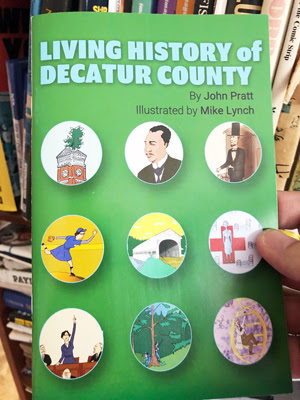
"It is likely the height of arrogance, not to mention utter foolishness, for me to attempt to writing a book such as this.Considering that all of human effort could perhaps be Ozymandian folly,the search for meaning, catharsis and dignity in the humble act of cartooning may seem an especially delusional quest. Perhaps this will end up as simply another 'blip' in a long line of misguided, ineffectual primers written by mediocre cartoonists -- a limp, halted spike in an already insipid graph of unworthiness.who, after all, wants to take lessons from losers?"from CARTOONING PHILOSOPHY AND PRACTICE by Ivan Brunetti, Buenaventura Press, Oakland, CA, © 2007 by Ivan Brunetti
"With the potential to utilize panels, characters, word balloons, captions and an unlimited special effects budget, the comic feature is a unique vehicle for humor and self-expression."
"The cartoon made something of a comeback in the 1970s after a decade or two of atrophy. Editorial cartoonists get more vigorous in their attacks on public officials, one of the good things to come out of Watergate; gag cartoonists tackled subjects that, a few years earlier, editors would not have touched with a ten foot pencil; comic strips became funny again; and advertising and public relations types seemed more willing to poke a little fun at their products or clients."
from CARTOONING by Roy Paul Nelson, Henry Regenry Company, Chicago, © 1975 by Roy Paul Nelson
"Imagine an unlikely situation. You're sitting in a doctor's outer office, waiting for your appointment. The man or woman across the room -- a total stranger -- looks at you and says, 'Make me laugh. I'll give you seven seconds.'"from THE CARTOONIST'S MUSE A GUIDE TO GENERATING AND DEVELOPING CREATIVE IDEAS by Mischa Richter and Harald Bakken, Contemporary Books, Chicago, © 1992 by Mischa Richter and Harald Bakken
"Among the attractions of cartooning as a profession are low overhead and the absence of technology. The cartoonist needs no complicated tools nor engineering degrees. Some paper, pens, a brush and ink will do it. You can be outfitted for your career in an hour, for forty dollars."
from CARTOONING THE ART AND THE BUSINESS by Mort Gerberg, William Morrow, New York, NY, © 1989 by Mort Gerberg
"Each experienced writer and cartoonist has his individual way of producing visual humor. One will do extensive reading, culling germs of gags, usually of the cliche variety, from novels and mystery stories. Another will walk the streets hoping to get ideas out of the thin air. Some read the daily papers regularly and conceive ideas from current happenings. Still others attend gatherings with their ears cocked, hoping to get that funny line. There is the seeker of satire who locks himself in a sound-proof room and stares at a blank wall, while another will throw himself on a couch and project himself into a gag trance."
from CARTOONIST'S AND GAG WRITER'S HANDBOOK by Jack Markow, Writer's Digest, Cincinnati, OH, © 1967 by Writer's Digest

from ED EMBERLEY'S DRAWING BOOK OF FACES by Ed Emberley, Little, Brown and Company, Boston & Toronto, © 1975 by Ed Emberley
from CARTOONING FUNDAMENTALS by Al Ross, Stravon Educational Press, New York, NY, © 1977 by Al Ross
"The basic element behind good style in cartooning is proper training. Another prerequisite is complete dedication to the art form, In the pages that follow you will be exhorted to be constantly drawing -- drawing from the model, sketching and copying the masters, and doodling, a form of subconscious art that helps tap the imagination. These activities will help you achieve your desired goal: mastery of sound cartooning fundamentals."

from ED EMBERLEY'S DRAWING BOOK OF FACES by Ed Emberley, Little, Brown and Company, Boston & Toronto, © 1975 by Ed Emberley









1 comment:
cool post. I dig this site.
Post a Comment